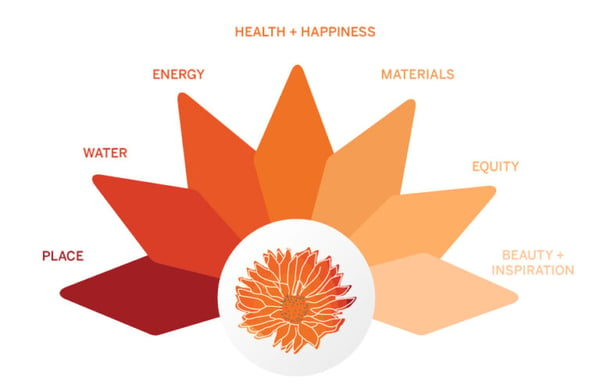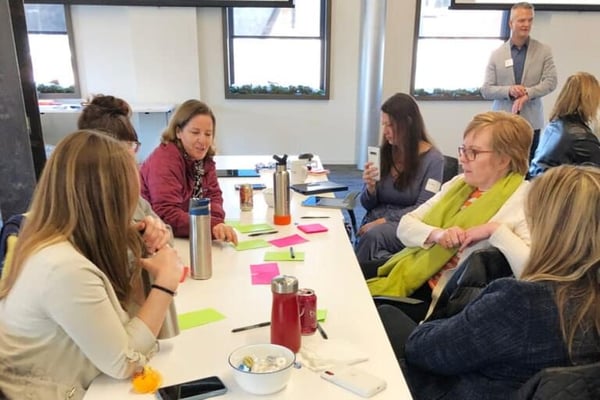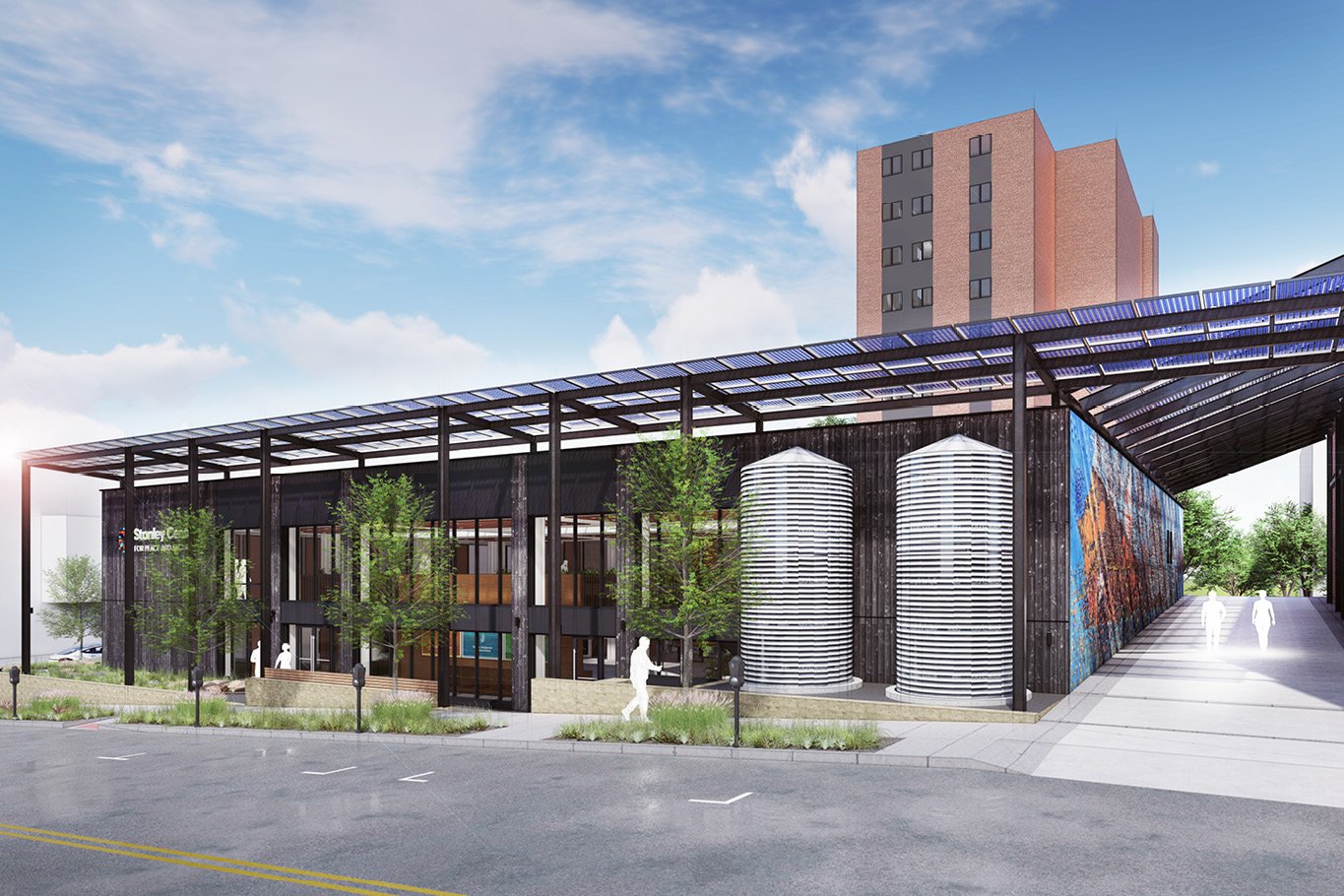The Living Building Challenge (LBC) is the industry’s most rigorous measure of sustainable design. Overseen by Living Future, it aims to cultivate building practices that enhance community life and benefit the planet.
At Neumann Monson, we are working with the Stanley Center for Peace and Security to design the first fully certified Living Building in Iowa. Construction is set to be complete in the Fall of 2022.
In our experience, the Living Building Challenge is truly a “challenge,” and its requirements add an extra layer of complexity to a project. While we always want to encourage sustainable design, we know the importance of establishing expectations.
This article will discuss some of the questions you should ask yourself if you are considering the LBC. After reading, you will be better able to determine if it aligns with your values and goals.
Defining the Living Building Challenge
The LBC is a third-party green building rating system that combines the expertise of architects, engineers, interior designers, landscape architects, and city planners. Rather than “do less harm,” it intends to create a positive, measurable effect on individuals, communities, and the environment.
Living Future offers multiple certification pathways. Fully certified projects meet the requirements of the LBC’s seven sets of criteria, known as “petals.” Petal and Core Certifications are intended to fit a broader range of project types.
Certifications are based on actual rather than expected performance and occur at least a year after construction completes.
The LBC also serves as an advocacy tool and works to transform the design and construction industry. Its rigorous requirements are difficult to meet under current market and policy conditions. By undertaking the challenge, you are driving positive change on a local and global scale.

LBC projects are judged against seven sets of criteria known as “petals.”
6 Considerations to Make Before Taking on the LBC
1. Are You Prepared for an Inclusive Process?
The LBC cannot be forced upon an organization or added in the later stages of a building project. To be successful, you need buy-in from stakeholders from the beginning.
Occupants play a crucial role in achieving certification. They will need to be included in the design process to learn about the project’s vision and sustainability practices.
Along with occupants, the LBC design process will include the broader community. In the early stages of the process, you will engage your community through surveys and learn how the project can benefit them. When complete, community engagement should continue with publicly available educational materials and an annual open house.
Inclusivity even extends to the construction process. An LBC project should include a diverse range of stakeholders, and a portion of the construction contracts should include registered Minority, Woman, or Disadvantaged Business Enterprises.
A donation to a regional or community-based non-profit focused on equity and inclusion can supplement this requirement.

Your team should be involved with the LBC design process.
2. Do You Own or Lease Your Space?
Full certification may be difficult for some clients. If you lease your space, you may not have control of enough of the building’s systems to meet the requirements of each petal.
An alternative route, like Petal or Core Certification, may better suit your project.
Be sure to discuss your options with your architect. If you want to pursue full certification, your architect can assist with site selection and help you determine the best course of action.
3. Can You Accommodate a Longer Timeline?
When taking on the LBC, you may need to adjust your schedule expectations and prepare for a longer design and construction process.
Your architect will need to perform additional research before they can start designing, including research into the site, its history, and the ecology. Your team will also engage in design workshops outside the scope of a conventional building project, including a biophilia workshop.
Your architect may also need additional time to research materials and find locally-sourced, non-toxic options. Their experience level with LBC may impact the amount of time they need to complete their research.
Approvals can further impact your project’s timeline. Some LBC requirements—especially those related to water usage—challenge conventional zoning and planning laws. Your schedule should allow for additional meetings with city officials to ensure all approvals are in place.
Lastly, your construction timeline may be longer than the timeline of a more conventional project. Materials will likely have the greatest impact on your schedule. On a conventional project, a contractor may be able to order alternative materials if they experience a manufacturing delay with a product.
An LBC project is limited to a select group of vetted options. If a critical path item is delayed, the overall timeline may be pushed back.
4. Are You Prepared for Extra Costs?
Simply put: an LBC project may have a higher cost than a conventional building project. Materials often have the most significant cost implications. Due to the LBC’s sourcing requirements, low-cost materials or competitive alternatives are not always available.
For example, LBC projects must use FSC Certified lumber that is harvested from sustainably managed forests. FSC Certified products tend to be more expensive than less sustainable alternatives.
Your architect should respond by simplifying the material palette and reducing the design to its essentials.
5. What is Your Project Delivery Method?
Some project delivery methods may suit the LBC more than others. We recommend hiring a contractor earlier in the process to collaborate with your architect and help research and vet materials.
By joining the project early, they will also learn about the LBC and convey the project’s vision to their subcontractors and trade partners. Communication between all parties is crucial to the success of an LBC project.
A negotiated contract or a delivery method that involves a Construction Manager may work better than delivery methods that require a public bidding process. A design-bid-build delivery method could create unique communication challenges.
Public bidding projects may still be able to pursue the LBC. However, you will need an experienced architect with a firm understanding of the LBC’s requirements.
6. Does the LBC Align with Your Values?
Taking on the LBC is a way to demonstrate your values and advocate for positive change. It is well-suited for organizations that are already committed to sustainability. If sustainability is a part of your culture, you are more likely to get buy-in from stakeholders.
Pursuing the LBC means you will become a green design leader in your community and set a high bar for future development. Your project will become a part of a global movement to reshape the design and construction industry.
Throughout the process, keep your aspirations in mind. The LBC is a relatively new system that is constantly evolving. The goal is to make its standards common practices across the industry. By taking on this type of project, you are acting as a trailblazer and inspiring much-needed change.
Learn More About the Living Building Challenge
The word “challenge” in Living Building Challenge is intentional. Its rigorous requirements challenge conventional design thinking, construction practices, and planning laws. If you want to pursue the LBC, carefully consider the research, time, and costs that come with this type of project.
By asking these six questions, you will better understand if the LBC aligns with your values and goals.
To learn more about the Living Building Challenge, read our overview of its seven petals.
